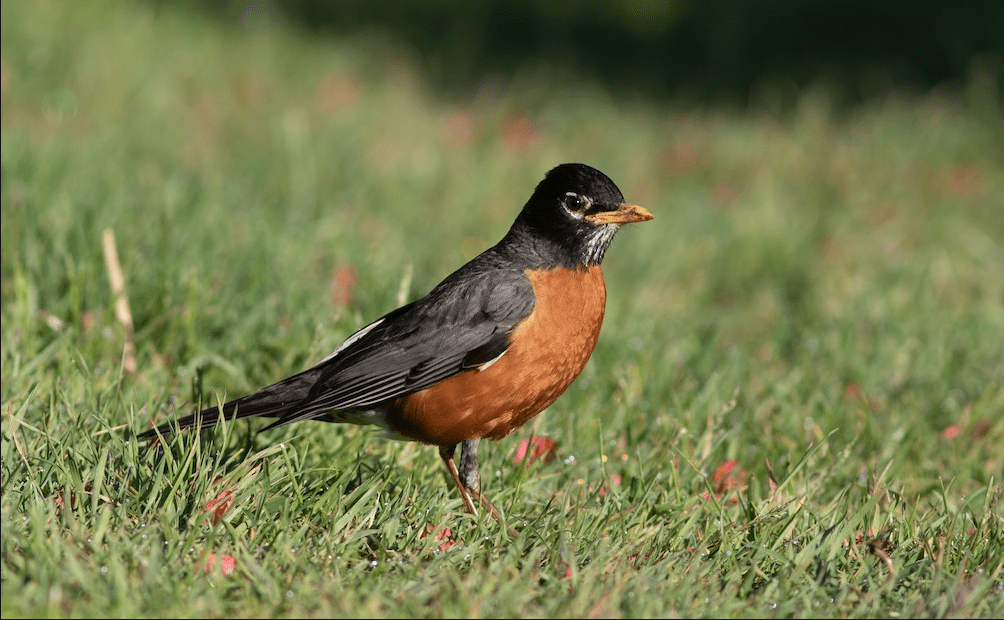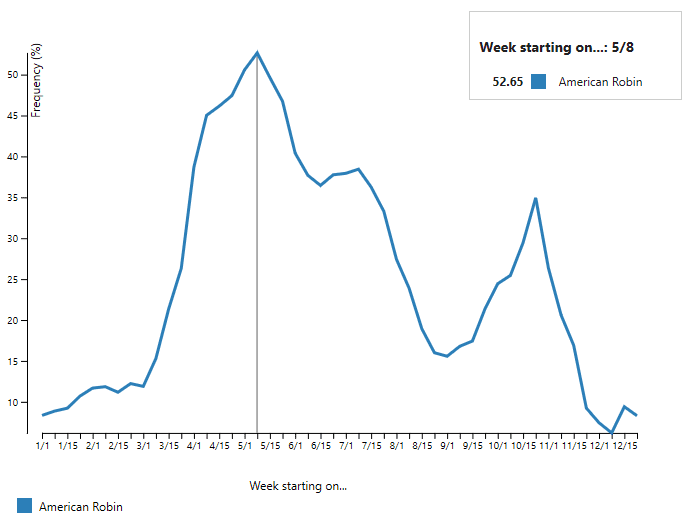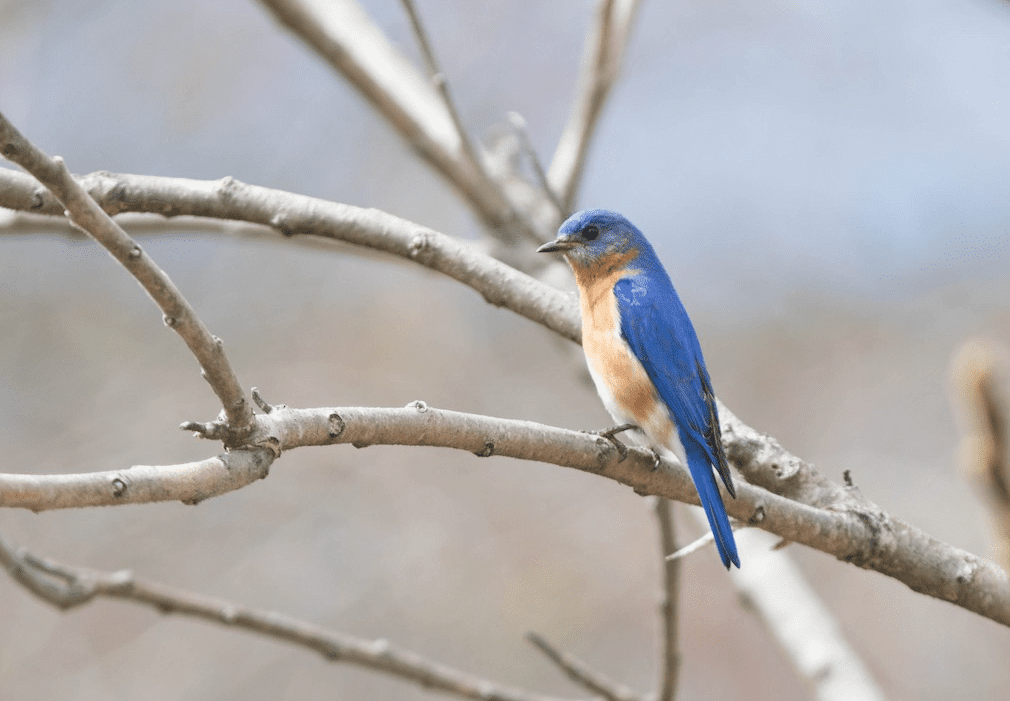My phone has been off the hook lately and most calls go like this: “There are robins (or bluebirds) in my yard! Did they forget to migrate? How will they survive? What can I do to save them?!?”
Quick Answer: Don’t worry, they are fine. American Robins are not a sign of spring in Maine and have no trouble spending the winter here. Eastern Bluebirds have been expanding their range and have become increasingly common in Maine during the winter, especially southern Maine.
Long Answer: It is easy to answer questions like this based on my own experiences and observations, but being able to back it up with real data is always fun:
American Robins
First, I always like to point out the latin name Turdus migratorius. Obviously migratorius makes you think of migratory, but it also means wandering, which is basically what robins do throughout Maine winters. They wander around, usually in large flocks, looking for food sources. Any fruit-bearing trees and especially staghorn sumac (Rhus typhina) are good places to find them.
Pulling observations from eBird.org, we can quickly create a graph showing the frequency of American Robins in Maine throughout the year (see below). The frequency is the percentage of all checklists submitted that include our species. You can see that this shows American Robins can be seen in Maine year-round, but their frequency does dip below 10% during December-January.


The birds we see in the winter are not necessarily the ones we see during the summer; they are probably completely different. I commonly hear people report “Canadian” robins, stating that they look larger. I think in the vast majority of cases, these birds just appear larger because they are fluffed up and trying to stay warm. That said, there is a population of American Robins nesting in Labrador and Newfoundland that are slightly larger (you would never notice this unless they were side-by-side) and adult males show black ending down the back. I would guess that the percentage of these nigrideus American Robins we see in Maine is very low; definitely less than 1% of all the robins I’ve seen fit this description.
Eastern Bluebirds
The history of bluebirds in winter is not a very long one but it is startling to see the change. Inserted below is the results from Christmas Bird Counts in Maine since 1993, showing the total number of Eastern Bluebirds reported on each year’s counts. The increase is dramatic, especially in the last 10 years.


I don’t know if there is a perfect explanation for this, but I think it is a result of many factors.
First, range expansion due to climate change. This would be pretty comparable to other ‘southern’ birds that are expanding into Maine, like the Red-bellied Woodpecker I wrote about in January.
There may also be an increase in habitat. This is a tough one, because it may not be a good thing if I have it right. Bluebirds do very well in suburban areas, and suburban sprawl is a never-ending problem that continuously threatens our biodiversity.
On the plus side, there seems to be an increase in landowners developing bluebird trails which increases nesting locations. One factor I think plays a big factor in their ability to stay in the winter is increased food availability.
With suburban areas come ornamental plantings (again, not a good thing as they are usually non-native) that hold fruit late into the winter. Bluebirds convert their diets from insectivores (ground arthropods) in the nesting season to frugivores (small fleshy fruit) in the winter so there is definitely an increase in the amount of food that is available.
What ever the cause, it is nice to see a little more color in the winter.
-Doug
Meet Doug Hitchcox, Maine Audubon Staff Naturalist
A Maine native, Doug grew up in Hollis and graduated from the University of Maine in 2011. Throughout college Doug worked at Scarborough Marsh Audubon Center and was hired as Maine Audubon’s staff naturalist in the summer of 2013, a long time “dream job.” In his free time, Doug volunteers as one of Maine’s eBird reviewers, is the owner and moderator of the ‘Maine-birds’ listserv and serves as York County Audubon board member and Secretary of the Maine Bird Records Committee.
